Hymenodora frontalis Rathbun, 1902Common name(s): Pacific ambereye |
|
| Synonyms: | 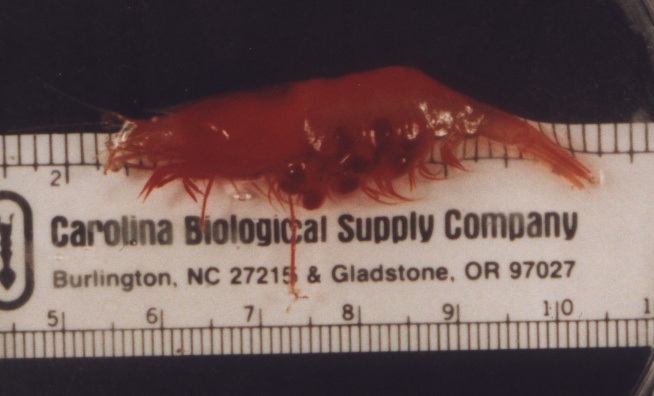 |
| Phylum Arthropoda
Subphylum Crustacea Class Malacostraca Subclass Eumalacostraca Superorder Eucarida Order Decapoda Suborder Pleocyemata Infraorder Caridea (true shrimp) Family Oplophoridae |
|
| A female Hymenodora frontalis carrying eggs. Caught 1000-1500 m depth off Pt. Conception, CA. Note the yellowish eye, almost devoid of black pigment, and the large egg size. | |
| (Photo by: Dave Cowles, May 1995) | |
How to Distinguish from Similar Species: The rostrum of H. frontalis is longer than that of other Hymenodora, extending beyond the peduncle of the first antennae (see photo, photo).
Geographical Range: Pribilof Islands, Bering Sea to San Clemente Island, CA
Depth Range: 200 to 3000 m
Habitat: Bathypelagic
Biology/Natural History: This bathypelagic species lives very deep in midwater. Its exoskeleton is so soft that it is often damaged on capture. Note that it has unusually large eggs for an Oplophorid shrimp. It is one of the most common deepliving Oplophorid shrimp off British Columbia. It is not a vertical migrator.
| Return to: | |||
| Main Page | Alphabetic Index | Systematic Index | Glossary |
References:
Dichotomous Keys:Chace 1986
Kozloff 1987, 1996
Wicksten, 2009
General References:
Butler
TH (1980) Shrimps of the Pacific Coast of Canada. The
Canadian Bulletin
of Fisheries and Aquatic Sciences 202: 1–280
Chase,
Fenner A., 1986. The Caridian Shrimps (Crustacea:
Decapoda)
of the Albatross Philippine Expedition, 1907-1910, Part 4:
Families
Oplophoridae and Nematocarcinidae. Smithsonian Contributions
to Zoology
Number 432. Paperback, 82 pp.
Scientific Articles:
Wasmer, Robert A., 1967. Bathypelagic shrimps (Penaeidea and
Caridea) from the eastern North Pacific. Master's thesis,
Walla Walla
College, College Place, WA. 86 pp.
General Notes and Observations: Locations, abundances, unusual behaviors:
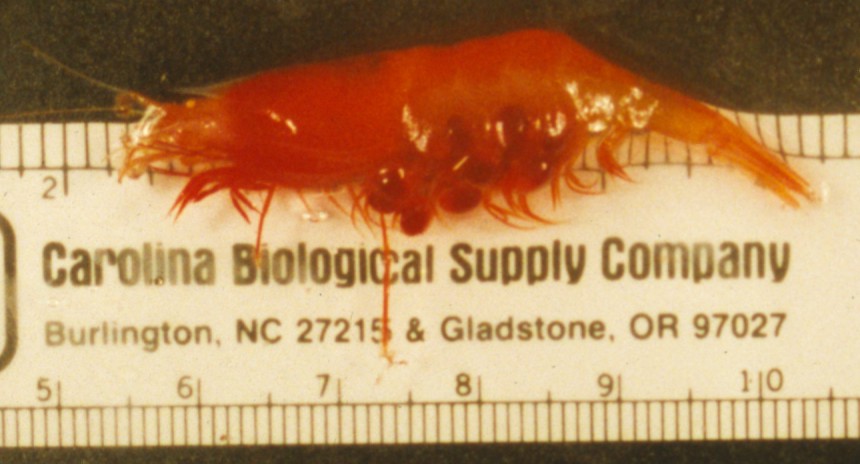
Another photo of a gravid female. Photo by Dave Cowles in San
Clemente Basin, CA, 1996. Caught at 1000-1500 m depth.
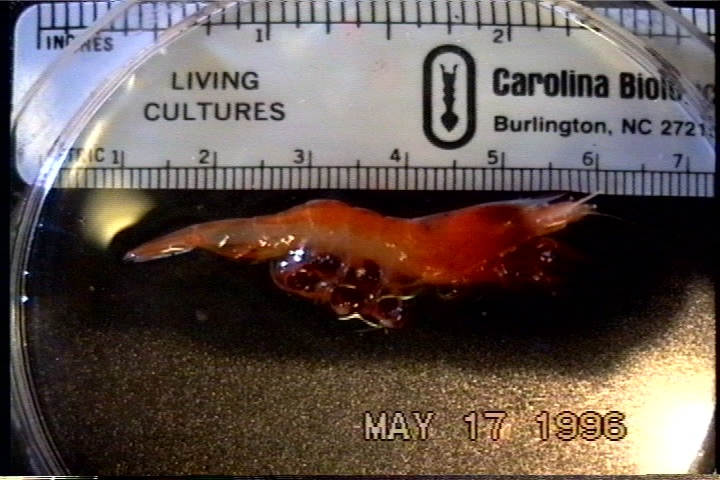
This gravid
female was captured in San Clemente Basin, CA in May 1966.
Frame
from a video by Dave Cowles. Click Here
to see the video
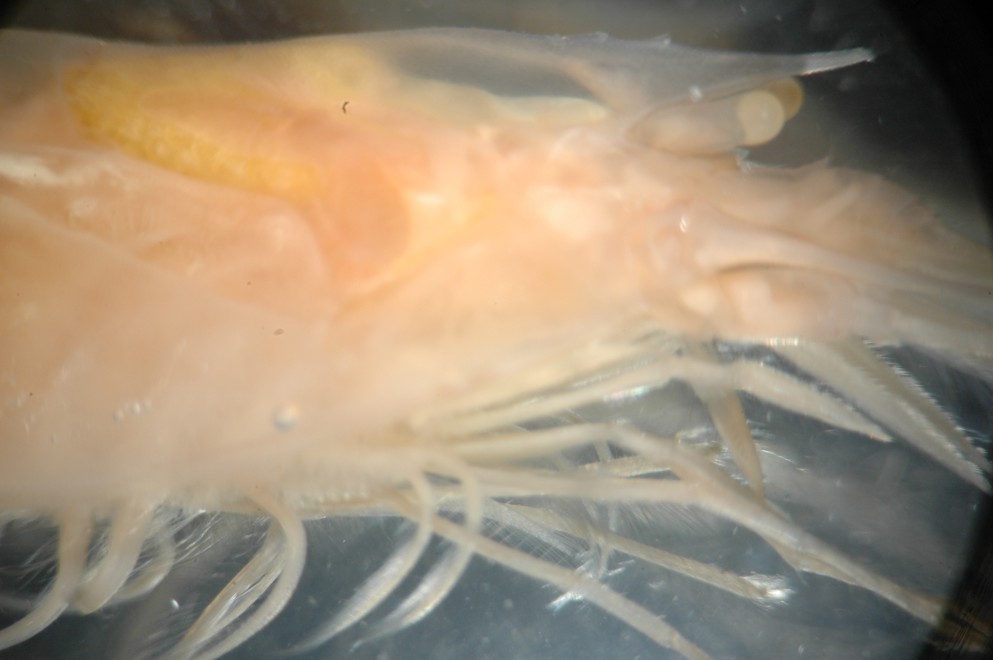
This side view of a preserved specimen shows the rostrum
which extends well beyond the corneas
of the eyes and even exceeds the peduncle
of the first antenna.
Note also the pereopods. Oplophorids, unlike most other
families
of true shrimp, has exopods (exopodites) on its pereopods.
The exopodites
of the pereopods are short,
curved backward and used for swimming. The endopodites of the
pereopods are longer, extended forward, and used for manipulating
objects.
The eye pigment in Hymenodora is always pale, even
in living
specimens.
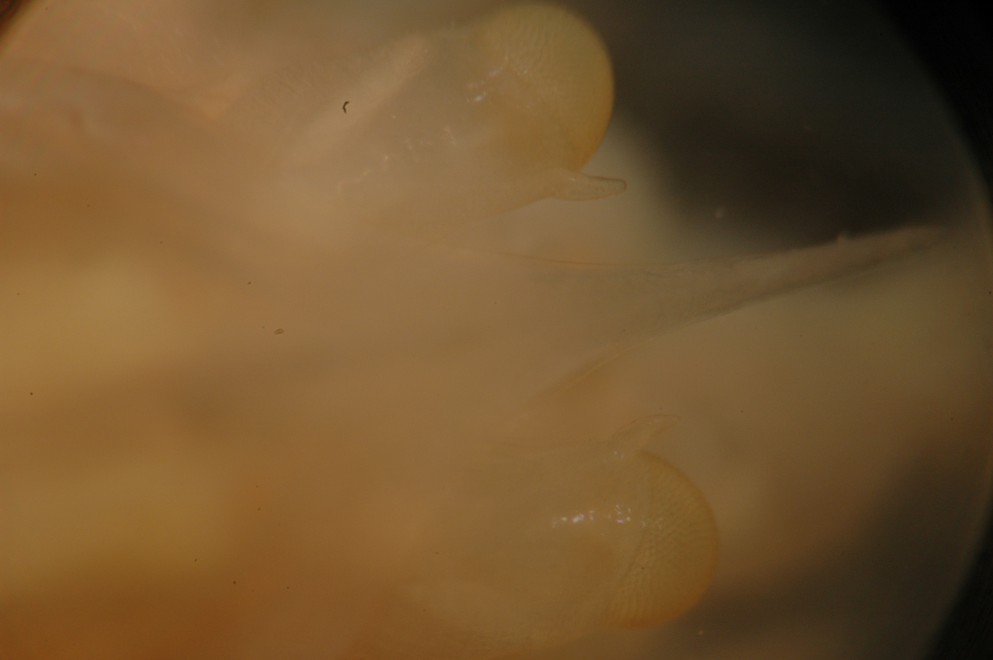
In this closeup dorsal view of the head, the median tubercles
on the eyestalks near the corneas
can be seen. From a presereved specimen.
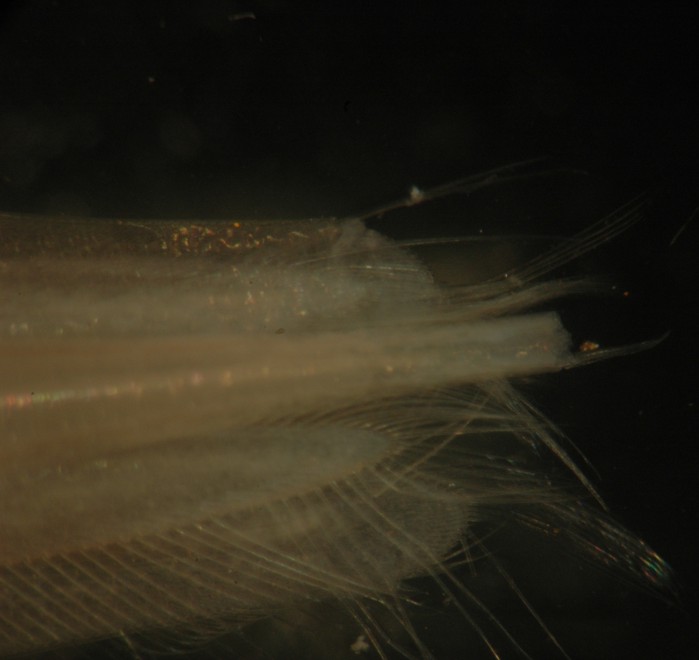
This is a closeup dorsal view of the telson
and uropods. The uropods are shorter than the telson
and fringed with long setae. The telson
is truncate
(not rounded) on the end, with two long spines at the corners (one of
which
is broken off on this individual). Photo of a preserved
individual.
Authors and Editors of Page:
Dave Cowles (2005): Created original page